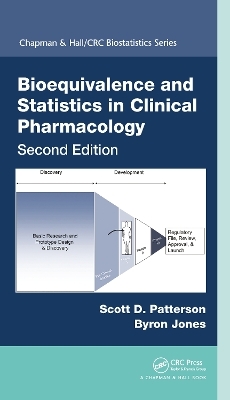
Bioequivalence and Statistics in Clinical Pharmacology
Chapman & Hall/CRC (Verlag)
9780367782443 (ISBN)
Drawing on knowledge gained directly from working in the pharmaceutical industry, the authors set the stage by describing the general role of statistics. Once the foundation of clinical pharmacology drug development, regulatory applications, and the design and analysis of bioequivalence trials are established, including recent regulatory changes in design and analysis and in particular sample-size adaptation, they move on to related topics in clinical pharmacology involving the use of cross-over designs. These include, but are not limited to, safety studies in Phase I, dose-response trials, drug interaction trials, food-effect and combination trials, QTc and other pharmacodynamic equivalence trials, proof-of-concept trials, dose-proportionality trials, and vaccines trials.
This second edition addresses several recent developments in the field, including new chapters on adaptive bioequivalence studies, scaled average bioequivalence testing, and vaccine trials.
Purposefully designed to be instantly applicable, Bioequivalence and Statistics in Clinical Pharmacology, Second Edition provides examples of SAS and R code so that the analyses described can be immediately implemented. The authors have made extensive use of the proc mixed procedures available in SAS.
Scott D. Patterson, Byron Jones
Bioequivalence & Biopharmaceutical Development
Drug Development and Clinical Pharmacology
Aims of This Book
Biopharmaceutical Development
Clinical Pharmacology
Statistics in Clinical Pharmacology
Structure of the Book
History and Regulation of Bioequivalence
When and How BE Studies Are Performed
Why Are BE Studies Performed?
Deciding When Formulations Are Bioequivalent
Potential Issues with TOST Bioequivalent
Current International Regulation
Some Practical Notes
Testing for Average Bioequivalence
Background
Linear Model for 2 x 2 Data
Applying the TOST Procedure
Carry-over, Sequence, and Interaction Effects
Checking Assumptions Made about the Linear Model
Power and Sample Size for ABE in the 2 x 2 Design
Example Where Test and Reference Are Not ABE
Nonparametric Analysis
BE Studies with More Than Two Periods
Background
Three-period Designs
Within-subject Variability
Robust Analyses for Three Period Designs
Four-period Designs
Designes with More Than Two Treatments
Adjusting for Multiple Testing
Nonparametric Analyses of Tmax
Technical appendix: Efficiency
Tables of Data
Special Topics in Bioequivalence
Dealing with Special BE Challenges
Restricted Maximum Likelihood Modelling
Failing BE and the DER Assessment
Simulation
Data-based Simulation
Carry-over
Optimal Designs
Determining Trial Size
What Outliers Are and How to Handle Their Data
Bayesian BE Assessment
Adaptive Bioequivalence Trials
Background
Two-stage design for testing for ABE
TOST using the standard combination test
Example of using the standard combination test
The maximum combination test
Example of using the maximum combination test
Conditional errors and conditional power
Algorithm for sample size re-estimation
Operating characteristics
Conclusions
Techniccal Appendix: R code
Scaled Average Bioequivalence Testing
Background
Scaled Average Bioequivalence in Europe
Scaled Average Bioequivalence in USA
Discussion and Cautions
Clinical Pharmacology
Clinical Pharmacology Safety Studies
Background
First-time-in-humans
Sub-chronic Dosing Studies
Food-Effect Assessment and DDIs
Dose-Proportionality
Technical Appendix
QTc
Background
Modelling of QTc Data
Interpreting the QTc Modelling Findings
Design of a Thorough QTc Study in the Future
Clinical Pharmacology Efficacy Studies
Background
Sub-chronic Dosing
Phase IIa and the Proof of Concept
Population Pharmacokinetics
Population and Pharmacokinetics
Absolute and Relative Bioavailabili
| Erscheinungsdatum | 06.04.2021 |
|---|---|
| Reihe/Serie | Chapman & Hall/CRC Biostatistics Series |
| Sprache | englisch |
| Maße | 178 x 254 mm |
| Gewicht | 453 g |
| Themenwelt | Mathematik / Informatik ► Mathematik ► Statistik |
| Medizin / Pharmazie ► Medizinische Fachgebiete ► Pharmakologie / Pharmakotherapie | |
| Studium ► Querschnittsbereiche ► Epidemiologie / Med. Biometrie | |
| Naturwissenschaften ► Biologie | |
| Technik | |
| ISBN-13 | 9780367782443 / 9780367782443 |
| Zustand | Neuware |
| Informationen gemäß Produktsicherheitsverordnung (GPSR) | |
| Haben Sie eine Frage zum Produkt? |
aus dem Bereich


